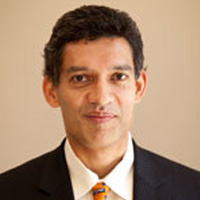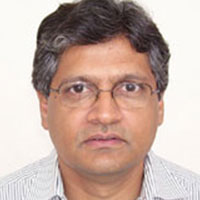The Modi government’s first Budget has received a mixed response. Eswar Prasad and Bharat Ramaswami present two distinct views on the Budget. While Prasad is of the opinion that the Budget hits the right notes and emphasises some key policy priorities, Ramaswami believes that a coherent policy and worldview is yet to emerge.
ESWAR PRASAD
The budget hits the right notes and emphasises some key policy priorities, but still maintains a realistic perspective that this is only the first step of a longer process toward reviving India’s growth and ensuring macroeconomic stability. The emphasis of this budget is on restoring macroeconomic stability by keeping the budget deficit and inflation under control and getting started on a modest set of reforms to build confidence and revive growth rather than instituting a full-blown package of reforms. There are many areas where the budget falls short of reforms and liberalisation measures that had been hoped for. The government seems to have taken a prudent strategy of managing expectations about what it can deliver in a short time frame. Perhaps the idea is to build credibility and a track record of implementation before embarking on more ambitious reforms.
Investment prospects
Domestic and business investors care about a stable macroeconomic environment, policy certainty, less restrictive labour laws, lower bureaucratic hurdles and a sound physical infrastructure. All of these will build confidence in India’s long-term growth prospects.
In some of these dimensions — macro policies, investment in infrastructure, indications of a more stable policy environment — this budget certainly sends the right signals. If the proposed measures are implemented effectively, it would certainly inspire confidence that this government can deliver on a broader range of much-needed reforms.
Economic recovery
This budget makes a modest attempt to shift the balance from populism toward reforms, although with some nods to policies that do have a redistributive element but could also be argued for on the grounds of efficiency (higher levels of tax exemptions, some new schemes). All told, this budget should serve as a catalyst for getting the economy moving in the right direction, especially now that the global economic environment appears more stable.
Manufacturing sector
The measures in this budget are not sufficient to quickly solve the deep-rooted problems that have held back the manufacturing sector in India. Improvements in physical infrastructure, better financial markets and more openness to foreign capital are all helpful, and the budget does take modest but positive steps in these areas. However, these measures will take time to bear fruit.
Meanwhile, labour market reforms, measures to reduce bureaucracy and red tape, and other major structural reforms have not been emphasised in this budget. So a lot more needs to be done to generate a durable manufacturing sector revival in India.
Job creation
This government is clearly eager to shift away from approaches such as employment guarantees toward relying on a higher rate of economic growth to increase employment generation. An improvement in manufacturing sector growth would help improve the availability of better-quality jobs.
Greater emphasis on financial market reforms that make it easier for small- and medium-sized enterprises to obtain financing would also aid employment growth. It is encouraging that the budget signals that the government is going to back the Reserve Bank of India (RBI) in its efforts in this direction.
It is also encouraging that the budget pays attention to improving the skills of India’s burgeoning youth population by putting more money into education. However, the amounts proposed are modest and a more substantial revamping of the education system will be needed to meet the needs of Indian enterprises.
Poverty alleviation
The budget, along with earlier statements from the finance minister, does herald a subtle shift away from populist measures that could hinder economic efficiency. It is encouraging, for instance, that the government has indicated it will continue to shift away from subsidies toward cash transfers, which will reduce leakage of social benefits before they reach their intended recipients and also avoid distortion of product markets. Unfortunately, in this budget the new government does not frontally tackle the costly and wasteful subsidy regime, perhaps not wanting to erode political support for other reforms.
Nevertheless, the budget does hint at the government’s approach — viewing growth as the best way to alleviate poverty rather than a focus on redistribution. Thus, the notion that this budget pays inadequate attention to the poor may not be appropriate.
FDI in defense and insurance
Foreign investors will certainly be encouraged by the raising of limits on FDI. The specific measures are in some ways less important than the signal they convey — that the government will continue reducing restrictions on foreign capital inflows and will welcome foreign capital.
However, as is the case with domestic investors, other aspects of India’s macroeconomic and policy environment are likely to be far more important in determining the volume of FDI and other types of capital inflows into India.
Tax administration
Improving the efficiency of the tax and expenditure systems is a crucial component of fiscal reforms in India. The steps proposed in the budget are certainly welcome ones but quite limited in terms of what is ultimately needed for a better fiscal system. Implementation of the goods and services tax is clearly an important priority and will serve as a good measuring rod for the government’s effectiveness in implementation of its broader agenda.
Urban vs. rural India
This distinction is important only insofar as it has implications for specific sets of policies. The budget’s emphasis on disciplined fiscal policy and reforms that are intended to boost growth and tamp down inflation are important for all sectors of the economy.
Having said that, there is a set of reforms that are particularly important for rural India and the budget does not seem to have much on these areas. The supply and distribution of food, in particular, needs improvement through reforms of agricultural and land policies. Moreover, changes are needed to government policies that have kept the distribution system, which remains dominated by small shopkeepers and multiple layers of middlemen, inefficient and wasteful.
Value of the rupee
It is likely that the budget and proposed reforms will lead foreign investors to take a closer look at India, especially with monetary conditions in advanced economies still remaining loose and a lot of capital looking for higher yields. If the government succeeds in its objective of keeping the current account deficit under tight control, capital inflows could then put upward pressure on the rupee.
If the budget sparks a growth revival and causes investors to revise upward their forecasts of medium-term productivity and output growth in India, then the rupee could come under more sustained appreciation pressures in the coming years.
A version of this article has appeared on the New York Times website in the NYT version, Hari Kumar interviewed Eswar Prasad on the budget.
BHARAT RAMASWAMI
Ever since it was sworn in, the National Democratic Alliance (NDA) government has been keenly watched for clues about its economic strategy. The markets and corporate sector had a wish-list that included the slashing of UPA’s (United Progressive Alliance) subsidy programmes, rollback of retrospective tax obligations, privatisation of nationalised banks, removal of labour regulations and an increase in the caps on Foreign Direct Investment (FDI) in insurance and defence. On the other side, Non-Governmental Organisations (NGOs) feared the dismantling of the Mahatma Gandhi National Rural Employment Guarantee Act (MNREGA) and the National Food Security Act (NFSA).
No grand strategy
As he introduced the budget, the finance minister promised that his speech would “lay down a broad policy indicator of the direction in which we wish to take this country”. So the curtains were about to be lifted. As it happened, in a long rambling speech, quite the opposite of his TV persona, Arun Jaitley put us all to sleep. The speech offered few decisive directions as the minor and the major were all strewn in with no special emphasis and no grand strategy.
Infrastructure and urbanisation
The budget allocations do, however, suggest that the emphasis is on infrastructure and urbanisation: smart cities, funds for municipalities, safe drinking water, highways, ports, rural roads, warehousing for agriculture, and rural infrastructure. All of this is welcome; yet even if the money is there, will these projects be executed without cost and time overruns? What will be done differently this time? Jaitley announced budgetary support to set up an institution to develop better models of contracting. This may be the most important initiative in the infrastructure sector. Urban improvement programmes run into another difficulty: how can municipalities and cities be incentivised to make best use of funds? How does one draw the line between overbearing regulation and a helpful prod? We have to wait to see if the NDA government has better ideas than its predecessor.
Welfare schemes and social sector
On subsidies, Jaitley announced intent to “overhaul the subsidy regime” and make them more targeted. While some scope for targeting might exist for fuel subsidies, it is not clear what the government proposes to do for food subsidies. The expansion of uniform but limited entitlements in the NFSA came about after evidence mounted that targeting excluded much of the poor. Most of the non-poor who receive subsidies are not super-wealthy either. The government can do better by thinking of better ways of delivering subsidies. On this, the budget speech was silent.
There was no mention of Public Distribution System (PDS) reforms, Unique Identification (UID) or direct benefits transfer. No major initiatives were announced for health and education either except for high-end hospitals and higher education institutes. Funds are not the only constraint for expansion of such institutions. The big hole in higher education is the lack of quality faculty. This has to be addressed first.
Coherent policy yet to emerge
While Jaitley announced that his government would work closely with states to promote competition with regulated markets, this contradicted the pre-budget stance of trying to stem food prices by regulations and laws. His speech also announced a price stabilisation fund even though elsewhere it is declared that the Food Corporation of India (FCI) will have to be restructured.
It is not clear how the principle of “minimum government, maximum governance” guides the multitude of allocations ranging from sports, handicrafts and indigenous cattle breeds.
Jaitley had a difficult job in putting together a budget in less than two months. What his speech shows is that a coherent policy and worldview is yet to emerge.
A version of this article has appeared on Live Mint.




 12 July, 2014
12 July, 2014 





Comments will be held for moderation. Your contact information will not be made public.